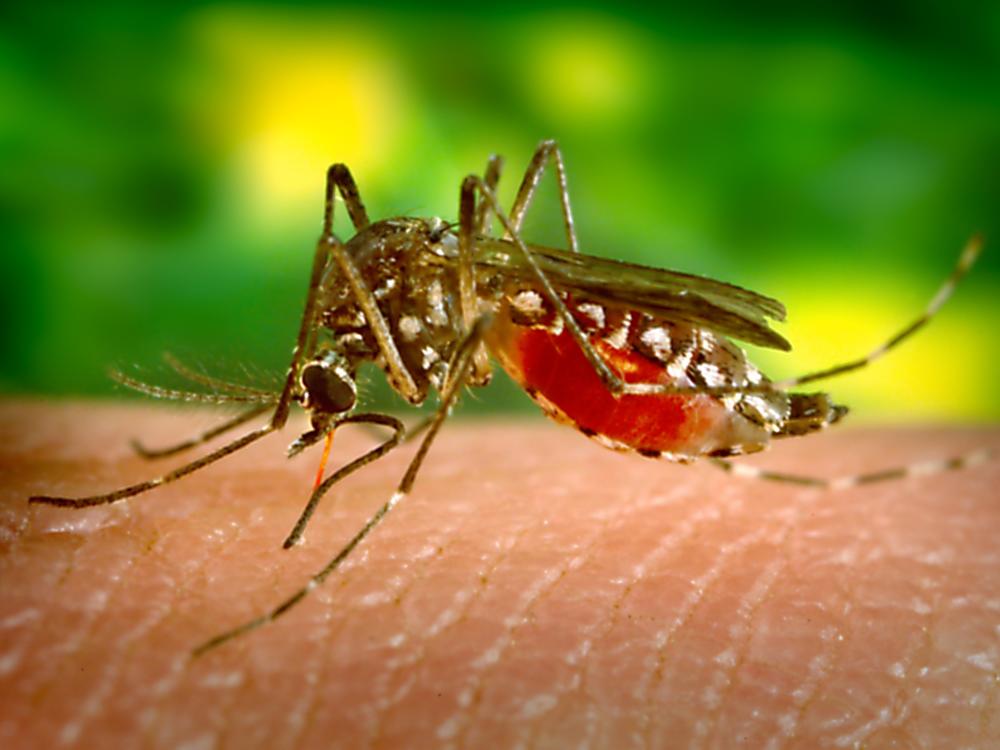Section Branding
Header Content
Why Does A Virus Cause Problems In One Region But Not Another? A Study Offers Insight
Primary Content
Why does a disease hit some countries or regions hard and largely spares others?
For example, the virus that causes COVID-19 has surged so strongly in North and South America. But it has been less of a problem in Africa and many parts of Asia.
No one knows the answer yet for the coronavirus. But for another emerging virus, called Zika, scientists now have a better understanding of why it hasn't been a major problem in Africa despite originating on the continent. It likely boils down to the critter that spreads the virus — or more specifically, the subspecies of the critter.
That's according to a new paper published Thursday in the journal Science. The study shows that one type of mosquito, found around the globe, not only loves to bite people but is also really good at making us sick.
Back in 2015, Zika swept across Central and South America, infecting more than a 100 million people and causing at least 3,500 cases of microcephaly in newborn babies. Microcephaly is a condition in which babies are born with very small heads and brain damage.
The mosquito-borne virus also broke out in the Pacific islands and in parts of Asia. Many health officials worried it would eventually cause major problems in Africa.
But that hasn't happened, says virus expert Louis Lambrechts at the Institut Pasteur, a biomedical research foundation in Paris. "Zika's never caused a major human outbreak in Africa, with the exception of [the islands of] Cape Verde, which technically is off the coast of Africa."
Zika spreads primarily through one species of mosquito, called Aedes aegypti, which thrives in tropical climates around the world. The mosquito picks up the virus when it bites a person. Then the virus replicates inside the mosquito. And when the mosquito bites another person, it can transmit the virus.
Not all A. aegypti are the same, says Lambrechts, who led the new study. The species comes in two major types: the forest-dwelling form, which predominates in Africa, and the human-loving form, which lives in Latin America and Asia.
The forest-dwelling form prefers to feed on animals, such as rodents or antelope. "It doesn't care about people," says neurobiologist Leslie Vosshall at the Rockefeller University, who wasn't part of the new study. "It's almost like actively avoiding people."
In contrast, the human-loving form really loves to feed on human blood, Vosshall says, and spends its life near people. So already, this difference in feeding preference is likely one reason Zika hasn't been such a big problem in Africa, Vosshall says.
Lambrechts and his team also wondered if the human-loving mosquito, the one in Latin America, is somehow more susceptible to infection with Zika than the forest-dwelling form and better at transmitting the virus.
To figure that out, he and his colleagues ran a simple experiment. They took mosquitoes from Africa, Asia and Latin America and fed them blood infected with varying amounts of Zika virus. Then they determined what percentage of insects got infected at each concentration of virus.
"The results were so clear-cut. It was almost too good to be true," Lambrechts says.
The mosquitoes from Africa — the forest-dwelling form — were more resistant to Zika infection than the human-loving mosquitoes from Latin America. The African mosquitoes picked up the virus from the blood meal only when it contained higher concentrations of Zika. In contrast, the human-loving mosquitoes got infected from the blood even when it contained much fewer Zika particles. The human-loving mosquitoes from Asia fell in between the other two populations.
So the infection pattern matches up remarkably well with the epidemiological pattern of Zika infections, Lambrechts says. Regions with mosquitoes that are highly susceptible to Zika infection (i.e., Latin America) have had large, explosive outbreaks. Regions with mosquitoes that are less susceptible haven't had big outbreaks (i.e., Africa). And the regions with moderately susceptible mosquitoes fell somewhere in between the two extremes (i.e., Asia).
The researchers then show that the African mosquitoes are less able to transmit Zika to mice in the laboratory, compared with the Latin American mosquitoes. The ones in Africa are less likely to pick up the virus from infected blood and less likely to have Zika virus in their saliva after feeding on an infected animal.
These new findings help explain why Zika all of a sudden became a problem in Latin America, Vosshall says, but hadn't been a problem in Africa. It depends on which flavor of mosquito is hanging around.
"We already knew the human-loving form loves to bite people, and so whatever the mosquito is infected with, it will very efficiently infect the person," Vosshall says. "Now this paper shows the human-loving form is also really good at growing Zika virus [inside its body]."
"So it's really our bad luck," she adds, because the mosquitoes that love to be near us, love to feed on our blood, also are really good at replicating a virus that makes us sick.
Copyright 2020 NPR. To see more, visit https://www.npr.org.

